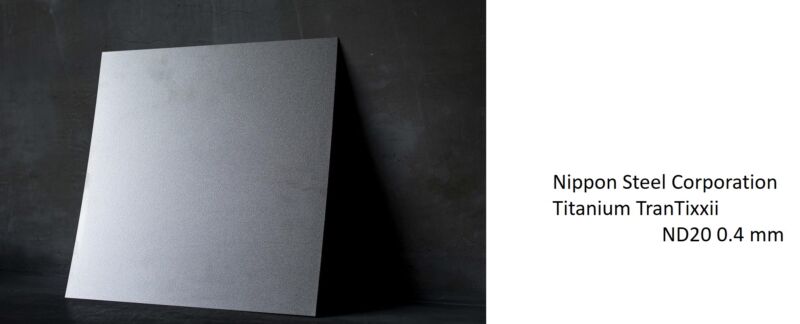What color do you think of when you hear the word “titanium”?
Some traditional titanium products have a light brown appearance.
Some titanium products have a light brown appearance, while others, such as watches, have a black appearance.
Therefore, some people may think that titanium is brown or black.
The color tone of pure titanium varies slightly depending on the titanium alloy or pure titanium, but the color of pure titanium is generally silver.
However, why does titanium have a different color despite being made of the same material?
In this article, I’d like to explain this thoroughly!

contents
Why does titanium become colored?
Similarly, the representative of [rust-proof] metals is stainless steel.
Stainless steel is a steel made of iron, chromium, nickel, and so on. In other words, strictly speaking, it is “rust-resistant.
The mechanism that makes it rust-resistant is the presence of a passive film called chromium oxide on its surface.
This makes it resistant to rusting.
Titanium, on the other hand, does not have iron components, so it does not have rust (red rust or black rust) as we know it.
On the surface of titanium, there is a passive film called titanium oxide.
Thanks to this passive film, corrosion is inhibited.
When left outdoors, this oxide film grows subtly, causing a change in color tone.
Commonly used color titanium products are made by controlling the thickness of this passive film.
The most common color titanium products express vivid colors by controlling the thickness of the passive titanium oxide film.

So, does titanium discolor if left unattended?
When the thickness of the passive film is affected by exposure to the outdoors, it appears as a discoloration.
Therefore, it is very important to use titanium made by a special manufacturing method that is resistant to color change for products that are concerned about color change, such as architectural and interior applications.
(In our company, we use Trannyxie titanium of Nippon Steel Corporation as base material.
(We use Trannyxie Titanium of Nippon Steel Corporation as our base material.) Many general-purpose titanium products sold in the market are not made with such a manufacturing process that prevents discoloration, so if you use the wrong one, the color will change like a famous roof.
The light, brownish color is a characteristic of titanium, but the extreme mottled change is not very acceptable unless it is designed as such.
Please be careful about the material.
Next is the change caused by oil. Because titanium has a color tone that changes depending on the reflection of light, when an oil film is applied on top of the passive film, the thickness of the film tentatively increases.
This is why it looks like a discoloration.
It can also be discolored by dust, dirt, and grime.
A bad idea is to use stainless steel cleaning agents sold at home improvement stores.
If there is even a very small amount of fluoride in the ingredients, it will cause discoloration. Please be careful.
What should I do if the color changes?
For common grease stains (such as hand stains), wiping with a dry tissue paper will restore the original appearance. Wiping with water is also effective.
For persistent stains, neutral detergent is good.
(*Acidic and alkaline detergents are not recommended. (*Acidic and alkaline detergents are not recommended, since you cannot tell the trace ingredients.
If you still can’t get it off, try cleaning with alcohol.
If this doesn’t work, it’s likely that the surface has already reacted.
In other words, no-maintenance is okay, but still, if it gets a little dirty, you can have it maintained and it will keep its beautiful surface.
How can I do this with as little maintenance as possible?
The best thing to do is not to affect the oxide film (passive film).
This is also true for the metal. Therefore, a thin coating on the surface of titanium can help it last longer.
For example, a quick coat of a glass-based coating such as our Macoat_GC is very effective against oil stains, dust, and dirt.
